Paint Tricks for Small Rooms — 11 Ways to Use Color to Transform Your Home's Dimensions
Consider paint tricks for small rooms to alter the look and feel of a tiny space, or even make an awkward layout feel perfectly aligned

Luke Arthur Wells
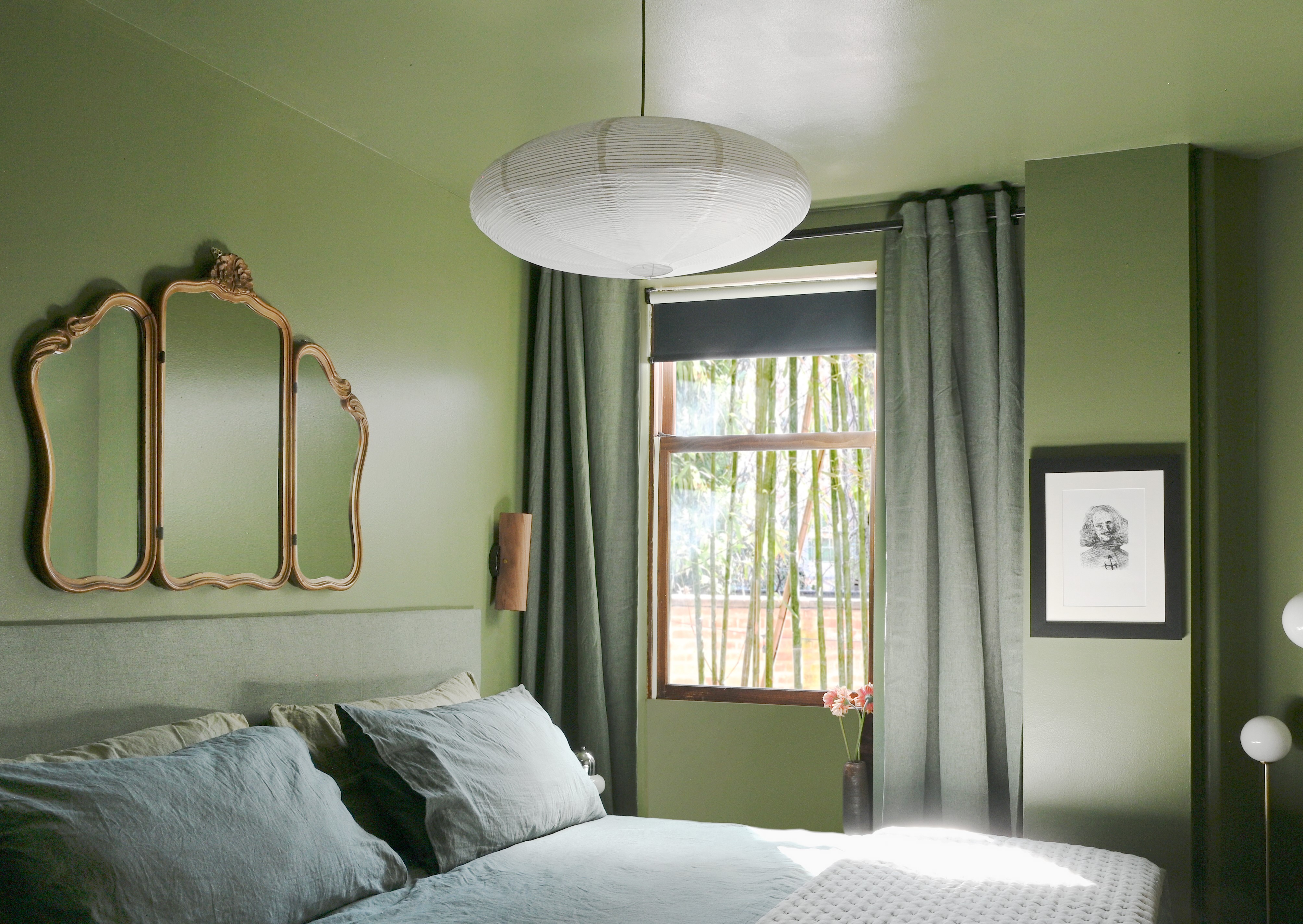
The right paint tricks for small rooms can change how you perceive your space. By painting spaces in specific ways, you can boost how big they look, or turn them into a 'jewel box', making them feel instantly luxurious and cocooning.
'Paint is such an easy and inexpensive way to have a powerful visual impact on your space,' explains interior designer Lane McNab. 'For small rooms, it’s less about the exact color you choose and more about how you apply the paint.' With that in mind, we asked interior designers for their go-to paint ideas when it comes to painting a small room. Take a look.
1. Paint stripes to create the illusion of height

Striped walls or ceilings can really shift how you perceive the size of a room. They create the illusion that the room has more depth than it does.
'For this room, the homeowners wanted a ‘Bohemian’ feel, which we achieved by using rattan and cane furniture, faux pampas grass, and a rug hanging on the wall; we added a bit of a twist to the boho vibe by creating a striped ceiling, which almost evokes a beach hut atmosphere.' says Sabrina Panizza, co-founder of PL Studio.
'This was a great way to give some visual interest to the room,' says Sabrina. 'Vertical stripes or patterns on the ceiling can create the illusion of height, making the room feel taller. Also, proper lighting is crucial. Ensure that the room has adequate illumination to brighten up the space and showcase the painted ceiling effectively.'
2. Color drench the room
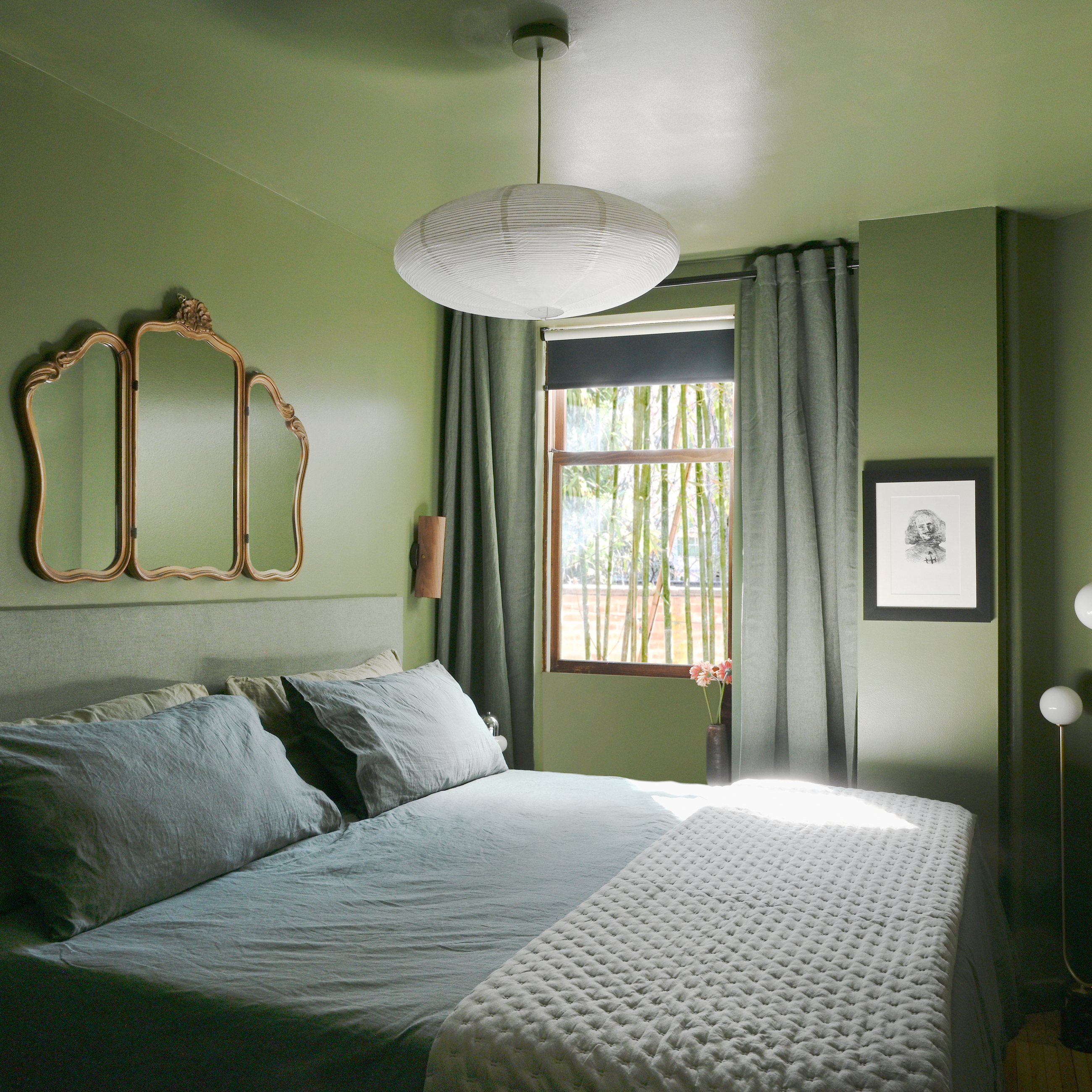
A great small bedroom paint idea, drenching a room in color can really changed how it's perceived. And no, small spaces do not need to be all white. In fact, painting the walls and ceiling the same color will give the space a jewel box effect, and make it a stand-out room in the whole house.
'For this apartment in NYC, we had the bed custom made in a green color that merges with the walls, helping it blend in and create the illusion of a larger space,' says Guillaume Coutheillas, founder of frenchCALIFORNIA. 'We also had custom storage and shelves built into the bed.'
The Livingetc newsletters are your inside source for what’s shaping interiors now - and what’s next. Discover trend forecasts, smart style ideas, and curated shopping inspiration that brings design to life. Subscribe today and stay ahead of the curve.
'Using ceiling paint strategically can help enhance the dimensions of a space,' Sabrina. 'Painting the ceiling the same color as the walls can create a seamless visual transition between the two, making the room feel larger and more open. Consider using glossy or satin finishes for the ceiling; these finishes reflect more light than flat or matte finishes, giving the illusion of height and space.'
3. Consider an accent wall
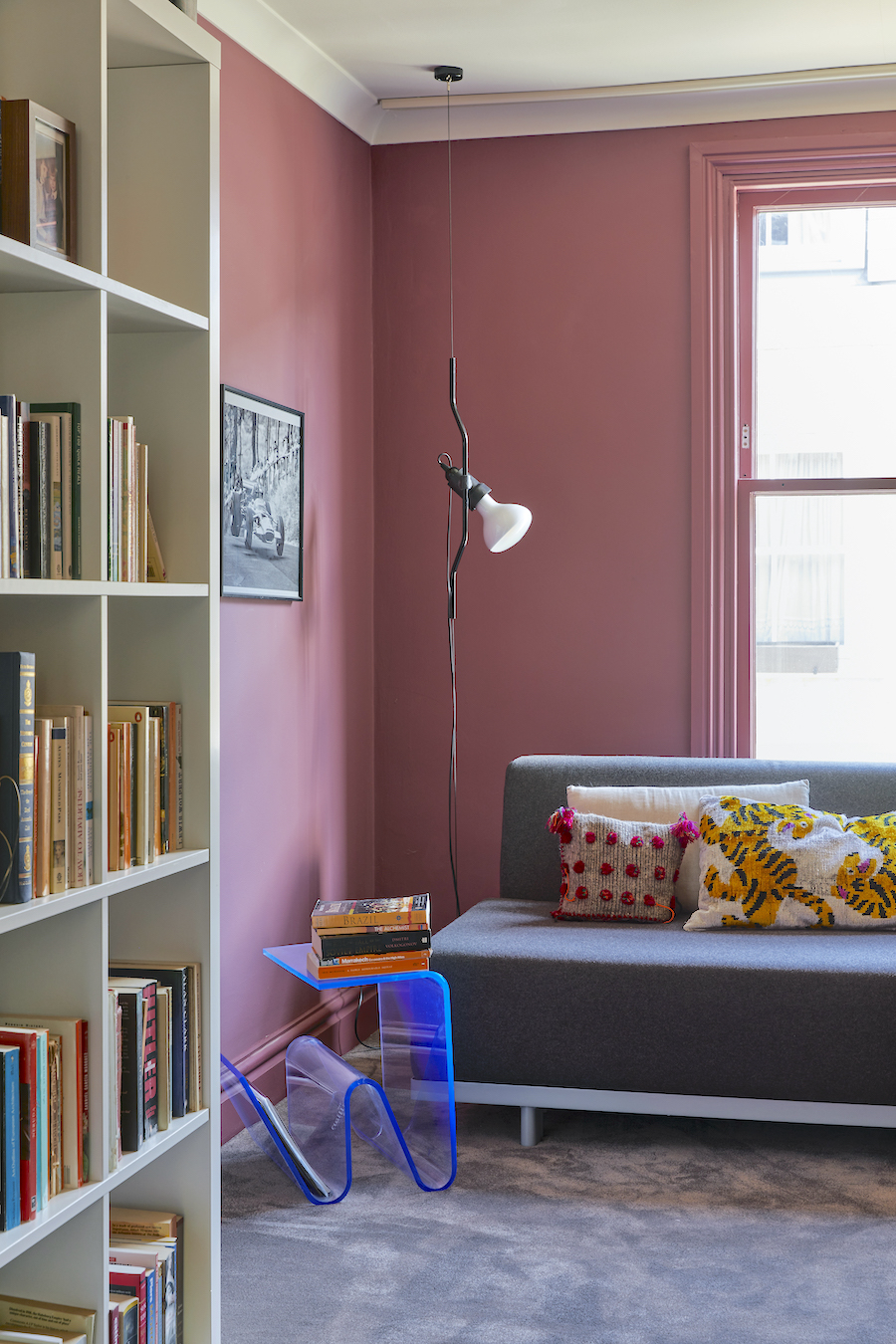
A great approach is to paint one accent wall to give the small room more depth, as it hinges entirely on contrast by comparison. Some designers say a dark accent wall in a room painted otherwise light can work magic for a small space. But how does a dark accent wall make a room feel bigger?
'A dark accent wall can appear to recede, making the space feel larger and more expansive,' says interior designer Kathryn Findlay, founder of Studio Findlay.
4. Keep it light
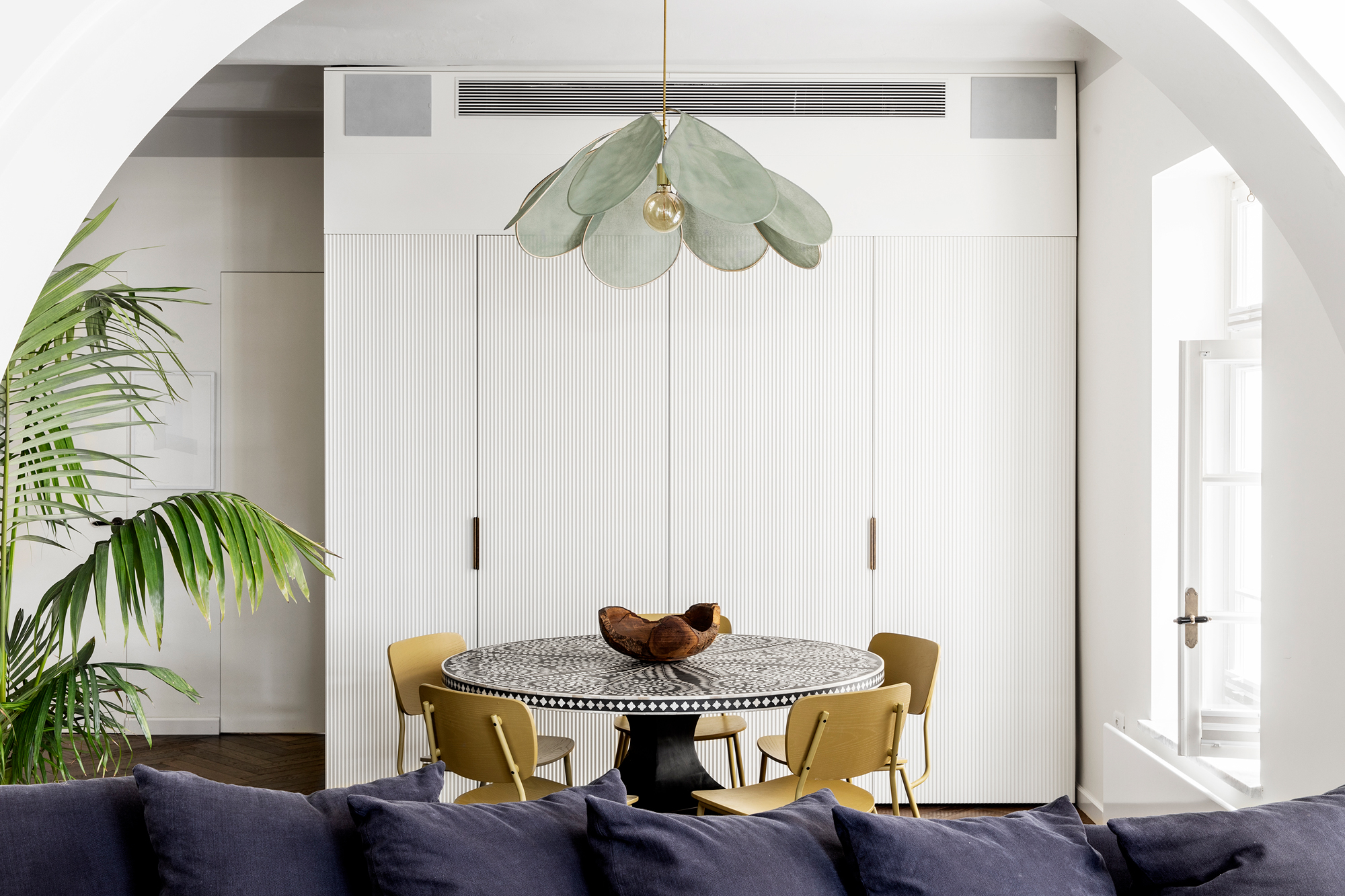
Your first instinct to take a small, dark room and paint it white may not necessarily be the worst idea to make it feel as big and bright as possible. 'Tones such as cream, off-white or beige are great to use in interiors, to open up spaces as these do not have the dark visual weight of organic browns or the clinical quality of a pure white,' says,' Jarret Yoshida, a Brooklyn brownstone interior designer. 'Cream or beige is that warm background color that provides us with the idea of the blank slate and warmth.'
Muted tones aside, there are a few clever ways to get the most out of your paint finish.
What is a full spectrum paint? This tends to be used to refer to a paint that doesn't contain any black (where most paint colors do). This makes this paint more reflective in light shades, and richer and deeper for other colors. Full spectrum paints used to be more of a niche product, but with ranges like Benjamin Moore's Aura now available, it's far more accessible.
5. Or go dark
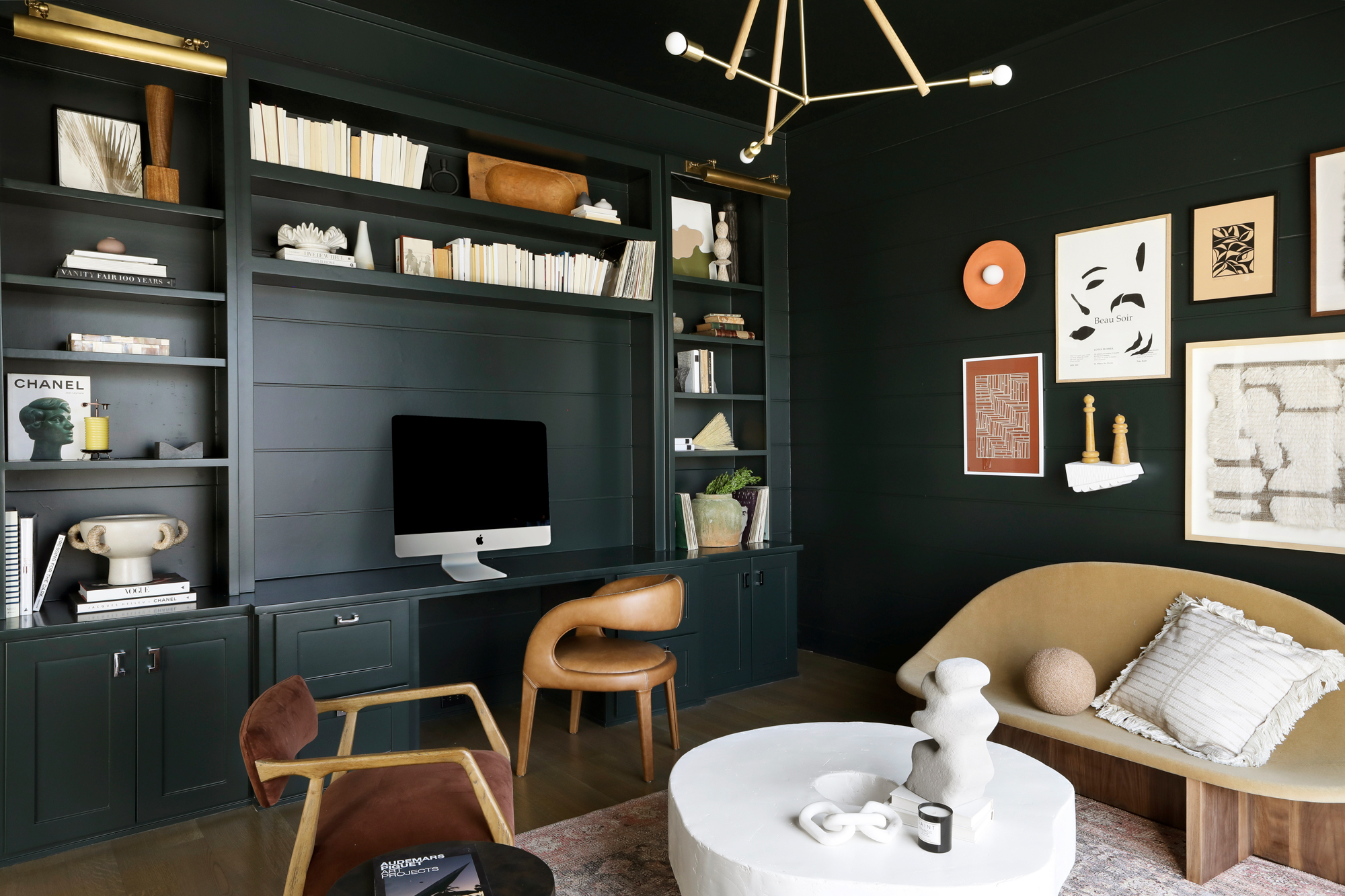
Rather than fighting the natural characteristics of a small, dark room, many interior designers are now leaning in to embrace the darkness for a more dramatic, less apologetic space
'Lean into the cozy factor,' suggests Jamie Gasparovic, owner and principal designer at Studio Gaspo. 'Pick a darker, moodier shade and paint the walls, trim, and ceiling the same color. It creates such a vibe in the room, and is a very intentional way to elevate the design of a small room with paint.'
In one way, a dark color scheme can also make a small room feel less claustrophobic. 'Darker colors also will highlight windows and views to the outside,' explains interior designer Lane McNab, 'which can help keep a small room from feeling confined.'
6. Paint the ceiling white with dark walls
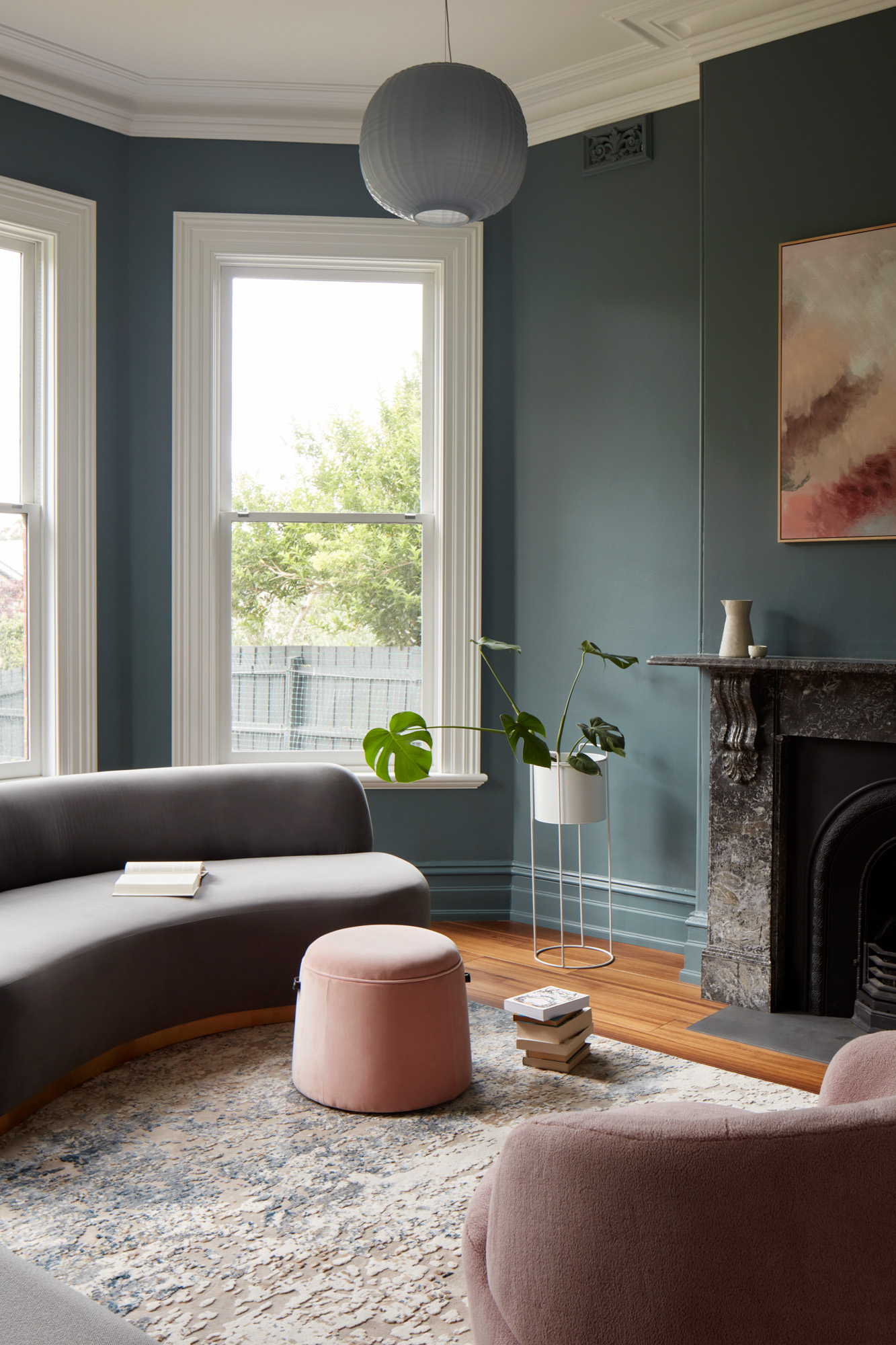
When you're trying to make a small room feel bigger, your ceiling is a good place to start. It can be hard to get to grips with what effect a painted ceiling can have on your space. If dark colors draw a room in, for example, surely you should always paint a ceiling white, no?
With the right color on the walls, this is a tried and trusted trick. 'For low ceilings, going dark on the walls and then painting the ceiling a light color will make the room feel airier and the walls taller,' says Lane.
7. Skew perspective with half painted walls
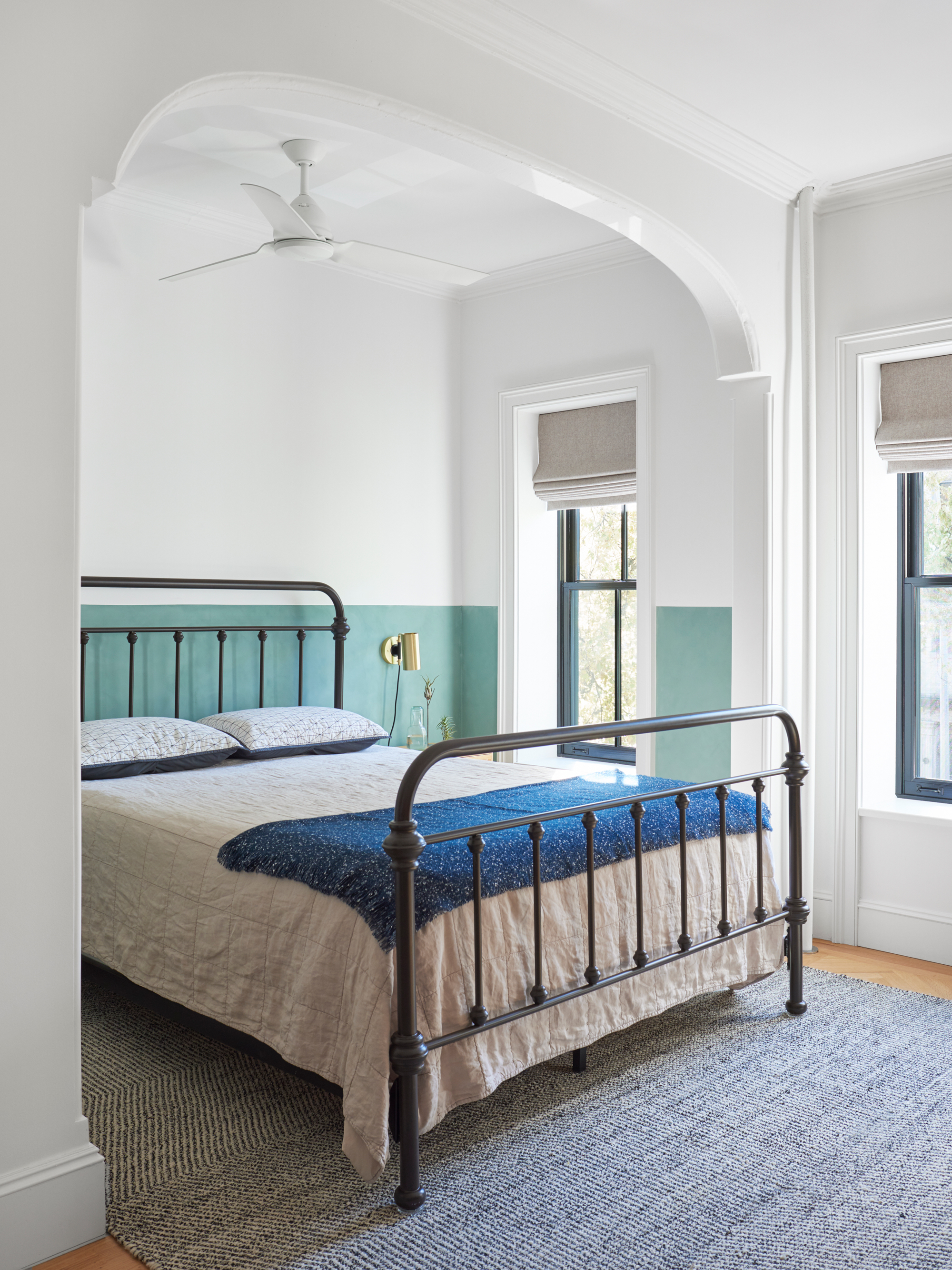
If you're considering a half-painted wall, whether it's just with paint, or combined with wall paneling or wainscoting, it's important to know how the height you choose will affect how you perceive the dimensions of the room. According to interior designer Rudolph Diesel, the key is to keep the color bottom heavy.
'Simply paint the bottom third of your room in one shade (this should be significantly darker or a different tone to the rest of the walls) and the remaining two-thirds a light shade, such as light grey or off-white,' Rudolph explains. 'This trick works as your eyes are drawn to the darker or brighter tone at the bottom of the wall which then makes the rest of the space between the wall and the ceiling seem longer, skewing the room's perspective and making it seem much taller than it is.'
8. Camouflage awkward architecture
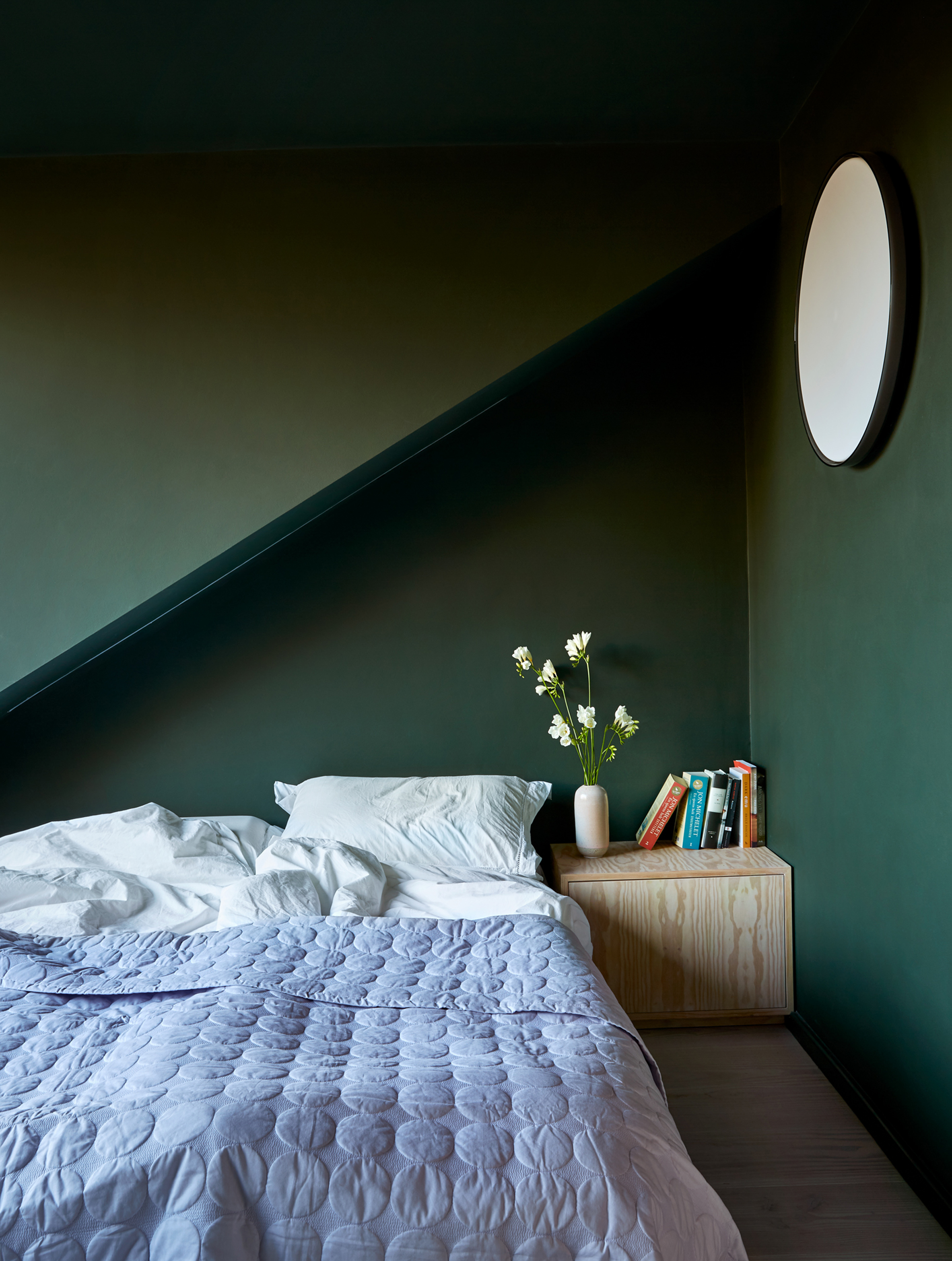
Small rooms often come with other drawbacks related to their compact footprint, but ones that might also be able to be remedied with paint. 'Awkward architectural elements can be minimized with paint too,' suggests Lane. 'For instance, that awkward corner fireplace that seems misaligned or maybe has unattractive tile will disappear if you paint the wall around it a similar color to the tile.'
'You can minimize asymmetry with careful paint techniques for walls that add the illusion of additional width or height,' Lane adds.
9. Match your wall color with your furniture

Many of the ideas surrounding small rooms link back to the idea of color drenching, even when it comes down to choosing the furniture to match your room's color palette. 'People are looking for a bright feel to their homes, but want the painting and lighting to feel warm, cozy, and inviting,' says interior designer Jennifer Davis. 'To go lighter, cleaner, and warmer, it's best to color the furniture and walls the same tone.'
Think about this idea for something like a small apartment living room in particular, where a sofa is going to be a dominant feature of the space. By choosing a dark green sofa to match the dark green walls in this home, designer Chloé Mason Gray helps it recede into the background.
10. Paint the doors and trim
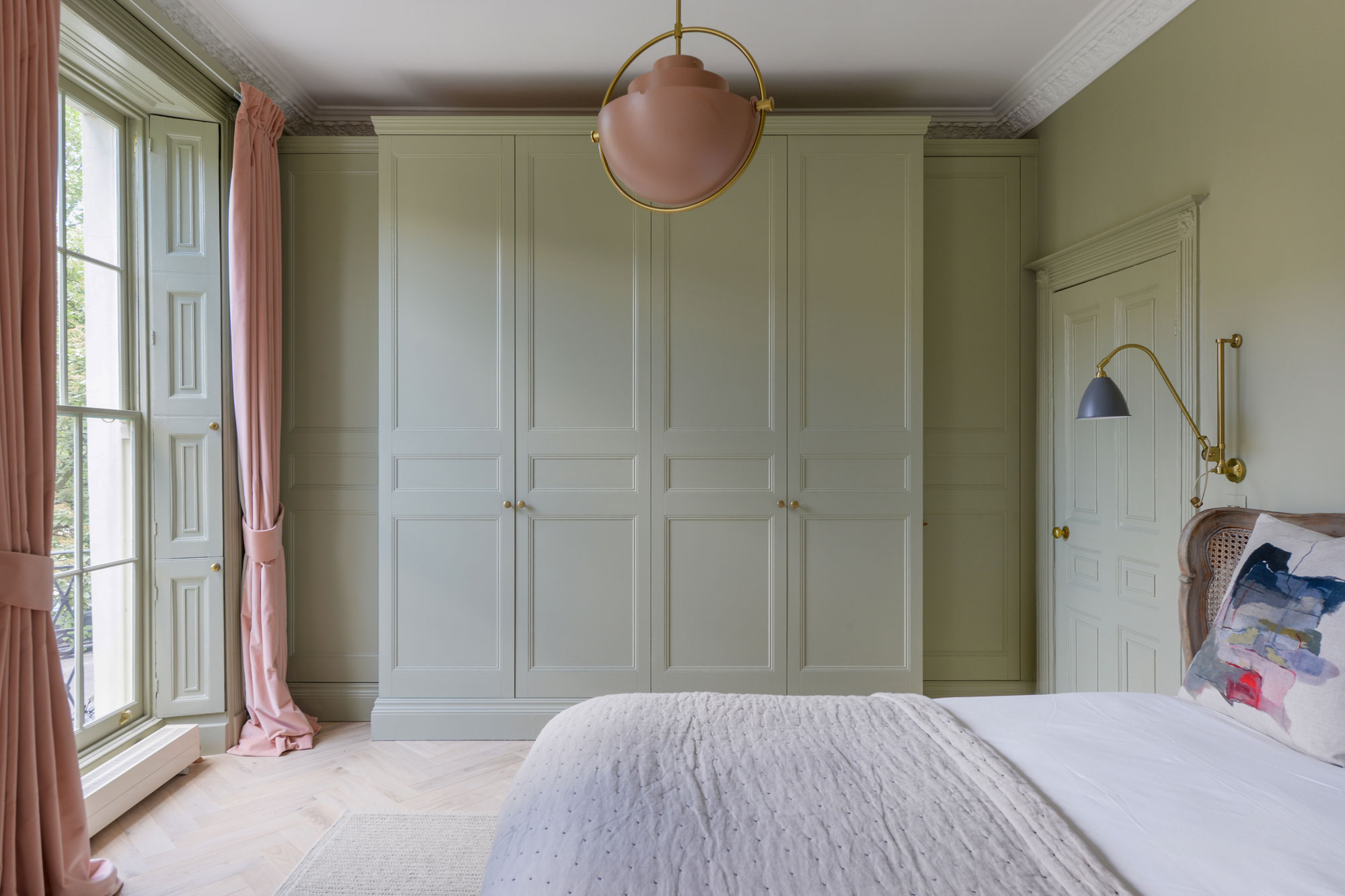
The big question is – should doors be painted the same color as the walls? The answer is probably yes if you're dealing with a small space. It all comes down to reducing the visual clutter of a room, and by painting the doors, trims, and more the same as the walls, you can stop these elements from overpowering the room.
In this sage green bedroom, Stephen Nash, creative director of All&Nxthing Interiors, used the same paint color on the walls, doors, trim, and built-ins, 'packing a lot in while ensuring it remains feeling like a peaceful, pared-back space,' says Stephen.
11. Consider reflective paint finishes
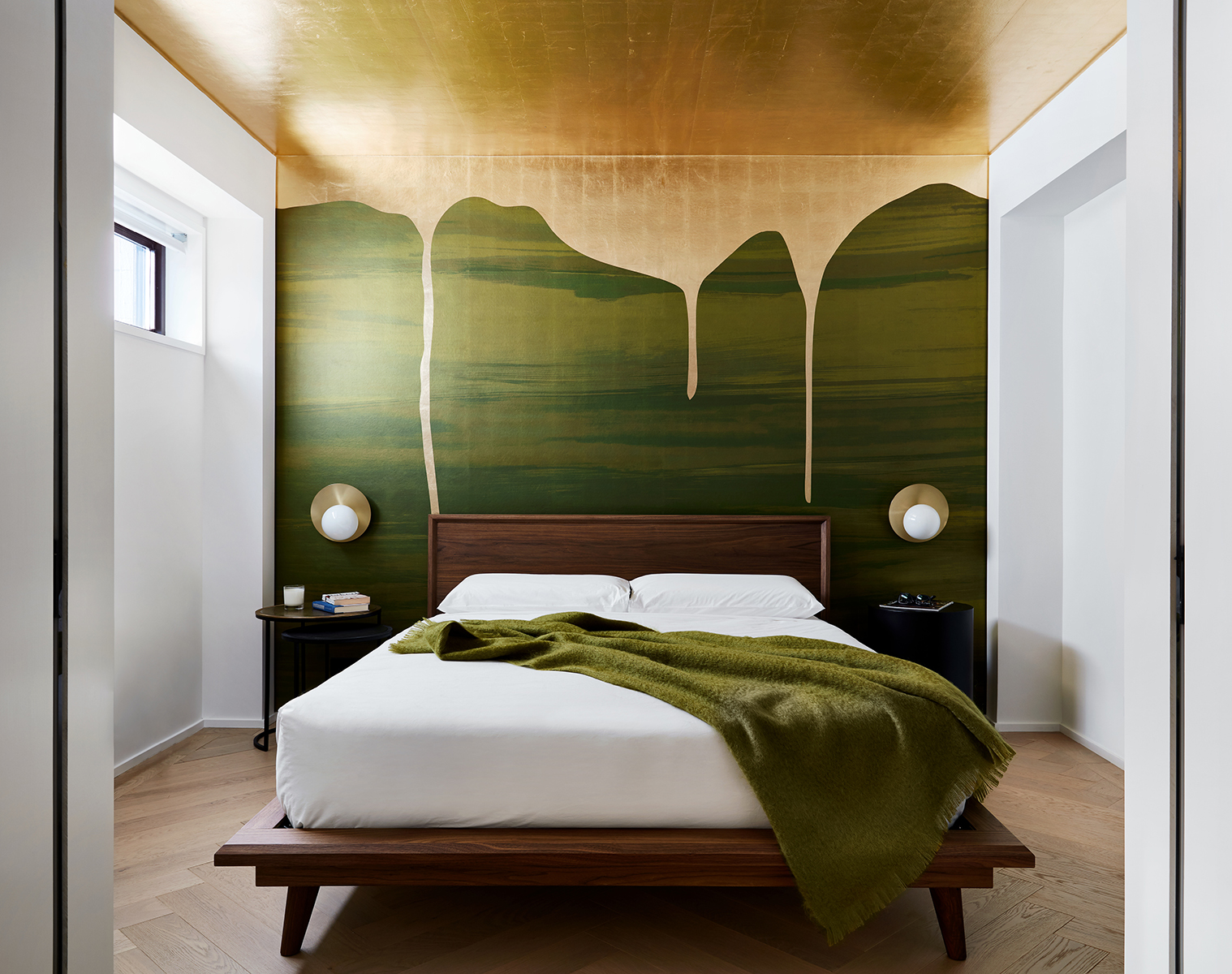
A more reflective paint finish can help a small space not only feel a little brighter but give it more of a sense of depth, too. However, don't go reaching for the gloss paint right away, says Rudolph. 'Semi-gloss paint can help reflect light into the space but not highlight any imperfections,' Rudolph explains.
Or, consider an even bolder approach. 'Consider metallic paint or wallpaper on the ceiling too for a little reflective element that makes the eye feel like the sun is shining down,' suggests Lane.
What color should I paint a small room?
There are several approaches to this, but it depends on the kind of mood you want to create. If you want your small space to feel airy and breezy, it's best to choose a muted tone like cream or light grey, to open up the space.
On the other hand, painting a smaller space in a darker color will give depth to the space, making it feel larger than it is. You could paint the walls and ceiling in a moody shade of charcoal grey, midnight blue, forest green, or chocolate brown.
3 paint colors for small rooms

Aditi Sharma Maheshwari started her career at The Address (The Times of India), a tabloid on interiors and art. She wrote profiles of Indian artists, designers, and architects, and covered inspiring houses and commercial properties. After four years, she moved to ELLE DECOR as a senior features writer, where she contributed to the magazine and website, and also worked alongside the events team on India Design ID — the brand’s 10-day, annual design show. She wrote across topics: from designer interviews, and house tours, to new product launches, shopping pages, and reviews. After three years, she was hired as the senior editor at Houzz. The website content focused on practical advice on decorating the home and making design feel more approachable. She created fresh series on budget buys, design hacks, and DIYs, all backed with expert advice. Equipped with sizable knowledge of the industry and with a good network, she moved to Architectural Digest (Conde Nast) as the digital editor. The publication's focus was on high-end design, and her content highlighted A-listers, starchitects, and high-concept products, all customized for an audience that loves and invests in luxury. After a two-year stint, she moved to the UK and was hired at Livingetc as a design editor. She now freelances for a variety of interiors publications.
- Luke Arthur WellsContributing Writer


